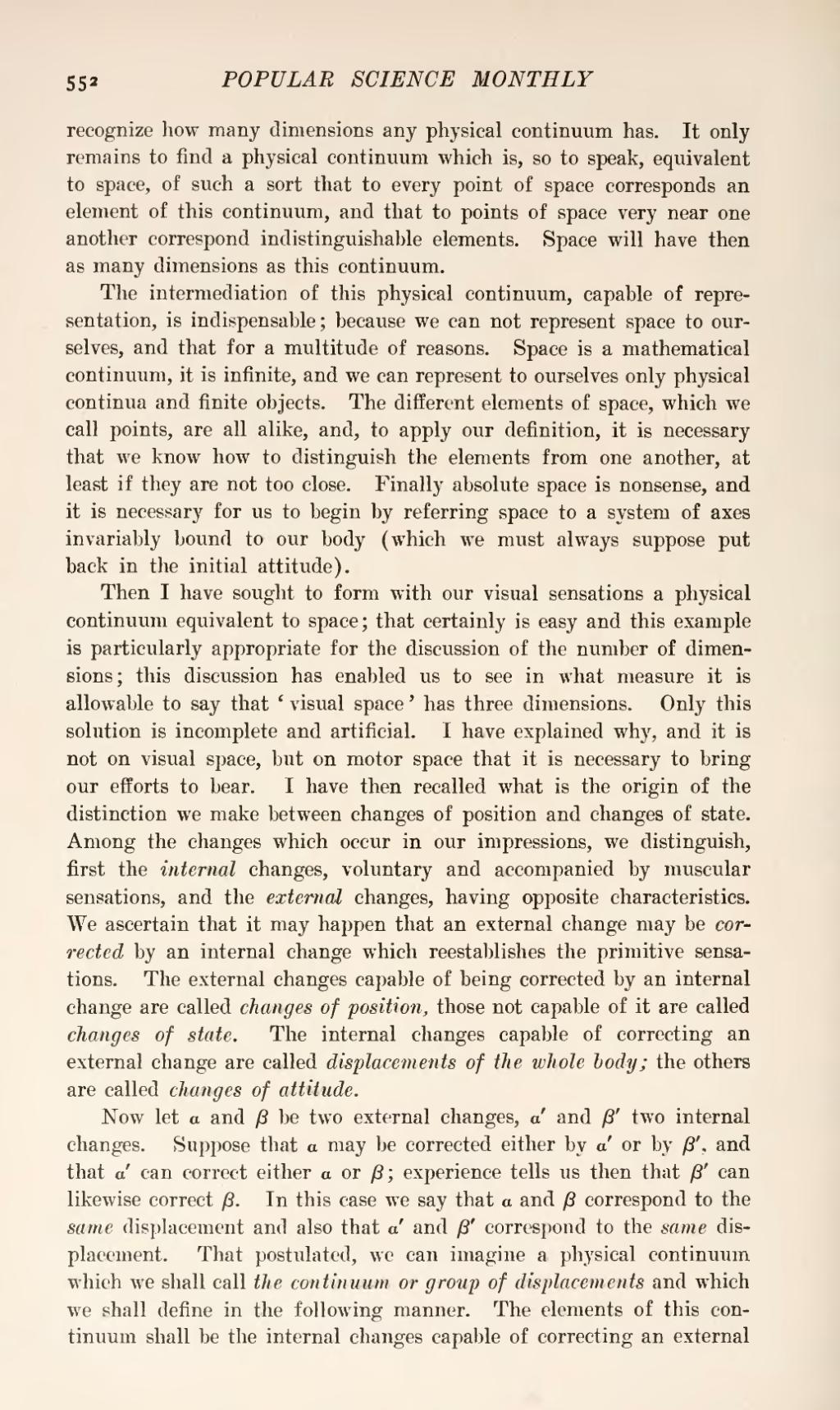recognize how many dimensions any physical continuum has. It only remains to find a physical continuum which is, so to speak, equivalent to space, of such a sort that to every point of space corresponds an element of this continuum, and that to points of space very near one another correspond indistinguishable elements. Space will have then as many dimensions as this continuum.
The intermediation of this physical continuum, capable of representation, is indispensable; because we can not represent space to ourselves, and that for a multitude of reasons. Space is a mathematical continuum, it is infinite, and we can represent to ourselves only physical continua and finite objects. The different elements of space, which we call points, are all alike, and, to apply our definition, it is necessary that we know how to distinguish the elements from one another, at least if they are not too close. Finally absolute space is nonsense, and it is necessary for us to begin by referring space to a system of axes invariably bound to our body (which we must always suppose put back in the initial attitude).
Then I have sought to form with our visual sensations a physical continuum equivalent to space; that certainly is easy and this example is particularly appropriate for the discussion of the number of dimensions; this discussion has enabled us to see in what measure it is allowable to say that 'visual space' has three dimensions. Only this solution is incomplete and artificial. I have explained why, and it is not on visual space, but on motor space that it is necessary to bring our efforts to bear. I have then recalled what is the origin of the distinction we make between changes of position and changes of state. Among the changes which occur in our impressions, we distinguish, first the internal changes, voluntary and accompanied by muscular sensations, and the external changes, having opposite characteristics. We ascertain that it may happen that an external change may be corrected by an internal change which reestablishes the primitive sensations. The external changes capable of being corrected by an internal change are called changes of position, those not capable of it are called changes of state. The internal changes capable of correcting an external change are called displacements of the whole body; the others are called changes of attitude.
Now let and be two external changes, and two internal changes. Suppose that may be corrected either by or by , and that can correct either or ; experience tells us then that can likewise correct . In this case we say that and correspond to the same displacement and also that and correspond to the same displacement. That postulated, we can imagine a physical continuum which we shall call the continuum or group of displacements and which we shall define in the following manner. The elements of this continuum shall be the internal changes capable of correcting an external




